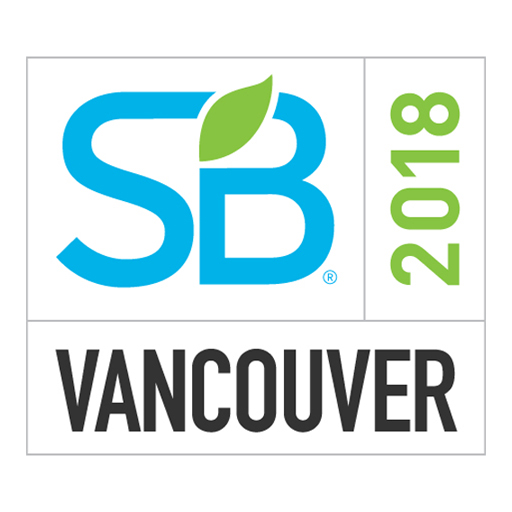What is the product or initiative in focus, and how does it support The Good Life?
As a business concerned with the well-being of our customers, our associates, our communities, and our suppliers, we are seeking to strengthen our climate resilience efforts. At Walmart, we are working hard to be a part of the solution to reduce emissions in our operations while supporting reductions in emissions across the global value chain. These efforts support the “Meaningful Connections” principle of the Good Life as we continue our work to broaden our sustainability aspirations and help communities where we operate.
For example, Walmart was the first retailer to set an emissions-reduction plan approved by the Science Based Targets initiative, in alignment with the Paris Climate Agreement.
Project Gigaton falls under this plan and between 2015 to 2030 we will work to reduce emissions in the global value chain by one billion tons (a Gigaton) – that’s equal to the emissions emitted by more than 211 million average passenger vehicles in a year.
This is an example of collaborative, cross-sectional engagement in action. Walmart recognizes that attaining of the Project Gigaton goal will require the collective effort of suppliers, customers and other stakeholders.
To support our suppliers in their commitments to reduce emissions, we worked with the World Wildlife Federation, Environmental Defense Fund and other like-minded organizations to create a digital resource center “toolkit” to help suppliers establish emission reduction projects through Project Gigaton.
The toolkit is a manual for suppliers to use as they set their emissions reduction targets, track their progress and report their savings. This digital instrument can be used regardless of how advanced suppliers’ current sustainability efforts may be, providing practical guidance and valuable resources for suppliers in all product categories. We have identified energy, agriculture, waste, packaging, deforestation, and product use and design as the goal areas in which to focus our Project Gigaton climate efforts.
To encourage suppliers’ participation, Walmart is sharing the business case for why suppliers should pursue reducing emissions and consider signing on to Project Gigaton. We believe that committing to setting reduction targets will not only be beneficial to our environment, but it will also benefit our businesses as well.
Project Gigaton is part of a series of Walmart sustainability initiatives, focused on addressing social and environmental issues in ways that help communities while also strengthening businesses.
How does this product or initiative reflect the true north star of the brand?
When Walmart was founded, we were very focused on bringing value on a broad assortment of merchandise to small town America. We were small and we felt that if we focused primarily on two groups of stakeholders, customers and associates, the others would benefit. Shareholders would do well and when it came to communities – we had a charitable giving program in the communities we served. But we were pretty focused on serving customers and providing opportunities and a strong, positive culture for our associates.
When Hurricane Katrina struck the U.S gulf coast in 2005, our then CEO, Lee Scott, challenged us to step up in a big way and we did. Walmart was an unexpected early responder there – providing more than 2,400 truckloads of supplies and 100 truckloads of donated goods while pitching in to help coordinate relief efforts on the ground. As that happened, a sense of pride emerged and we saw how our size and scale (we were still getting used to being a big company) could be used for good. Lee asked us, “what if we could be that kind of company all the time?” and that set us on a new course. We started learning more about social and environmental sustainability and we began to see an overlap with doing good and financial success. We set some big goals: to be powered by 100 percent renewable energy, create zero waste, and sell products that sustain people and the environment. Project Gigaton is one example of how we continue to move forward to reach these goals.
What positive social and/or environmental impacts are being created?
In its first year, Project Gigaton has helped to inspire action that has led to the avoidance of millions of metric tons of greenhouse gas emissions and has expanded into an international campaign that includes the participation of several hundred suppliers.
Walmart recently announced that our suppliers have reported reducing more than 20 million metric tons (MMT) of greenhouse gas emissions in the global value chain, as part of the Project Gigaton initiative.
With the recent expansion of Project Gigaton in China and the U.K., more than 400 suppliers with operations in more than 30 countries have joined the program. Approximately 85 percent of the Project Gigaton emissions reductions reported by suppliers have focused their efforts within the initiative’s energy and product use pillars, with projects devoted to areas such as renewable energy investments and the development of more efficient products.
How are positive social and/or environmental impacts being communicated?
We are using multiple mediums to engage, communicate and highlight the progress being made under this initiative.
Walmart recently launched a supplier recognition platform on our website to highlight the leadership of Project Gigaton’s GigaGurus – suppliers that have set SMART (specific, measureable, achievable, realistic and timely) emission reduction goals.
Walmart also amplifies our suppliers’ emission reduction efforts at our sustainability milestone summits and via our external communications channels.
What is the business case for this product or initiative, and is it delivering a positive ROI?
Our work to reduce emissions and increase efficiency has also helped us to lower some of our operational expenses. A few years ago, we announced that we had exceeded our goal of doubling the efficiency of our trucking fleet by 2015. This was made possible by our associates’ efforts to improve techniques for loading, routing and riving as well as through collaboration with equipment and system manufacturers on new technologies. With these new efficiencies, we achieved savings of nearly $1 billion and avoided emissions of almost 650,000 metric tons of carbon dioxide in 2015 compared to 2005.
Walmart has also now installed more than 1.5 million LED (light emitting diode) fixtures across more than 6,000 of our stores, parking lots, distribution centers and corporate offices in 10 countries. This has reduced Walmart’s lighting energy consumption and reduced our lighting costs by hundreds of millions of dollars over the past decade.
We are sharing these types of experiences with our suppliers and asking them to look at whether they can realize similar benefits in their businesses.
Walmart believes that embracing and incorporating climate solutions can foster growth and cut costs. By demonstrating how sustainability investments can cut costs, we aim to strengthen businesses, our economy and the environment.
Participate in Sustainable Brands’ annual flagship event, SB’18 Vancouver, this June 4-7, to learn how and why companies around the world are embedding “The Good Life” principles like transparency and purpose into their brands to grow their businesses in this new economy, and gain the tools to do the same for your brand.
By Katherine Neebe
Senior Director for ESG, Trust and Transparency at Walmart, Inc.
May 11, 2018


